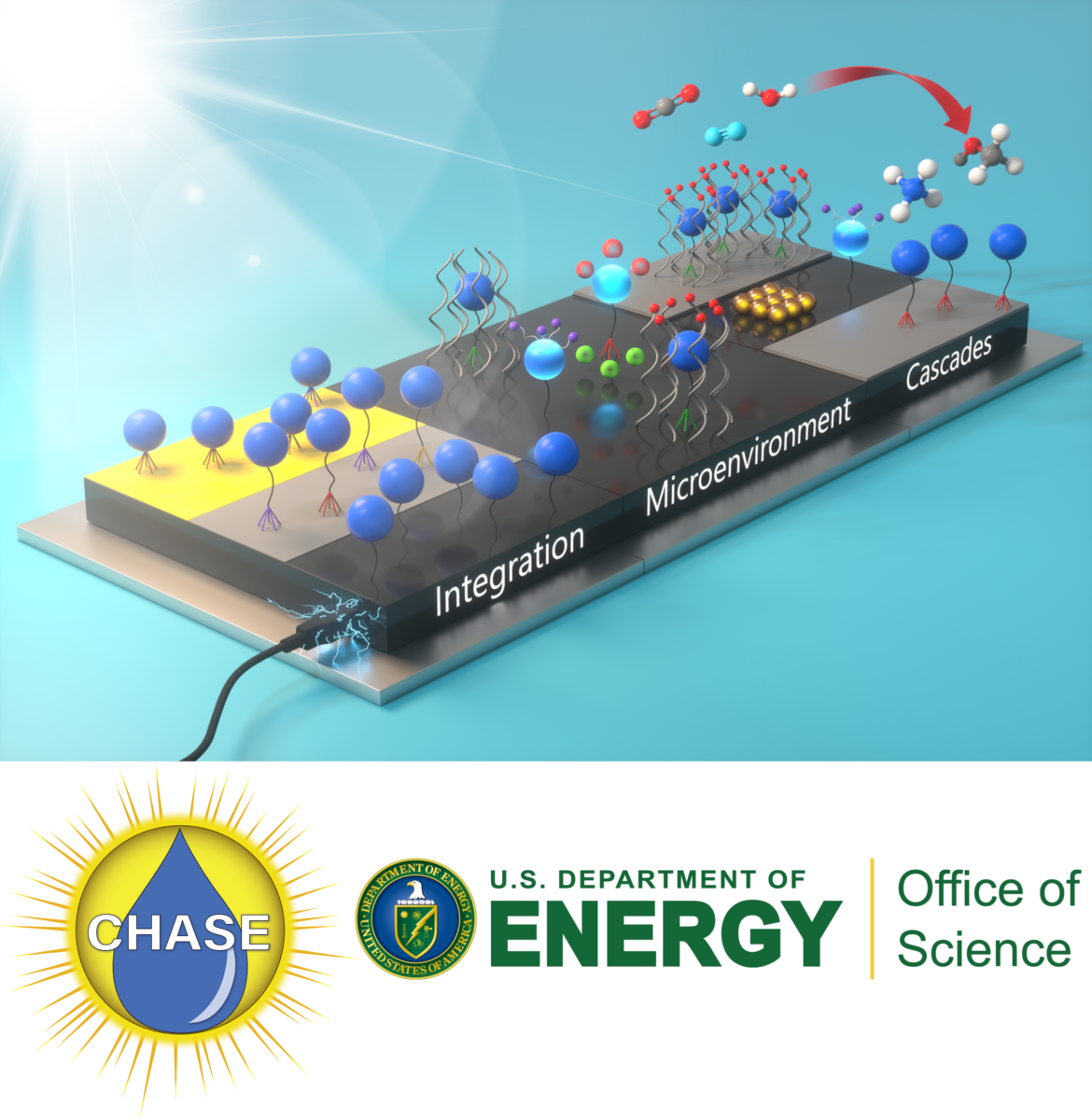Center mission:
CHASE’s mission is to develop molecule/material (hybrid) photoelectrodes for cooperative sunlight-driven generation of liquid fuels from feedstocks found in air: CO2 and H2O. The Center is pursuing these goals through three interconnected Thrust areas: Thrust I: Catalyst-Semiconductor Interfaces; Thrust C: Cascades Catalysis, and Thrust H: Catalytic Hybrid Photoelectrodes.
Scientific goals:
Pairing the light-absorbing properties of semiconductor materials with the selective fuel-producing reactivity of molecular catalysts, CHASE will advance a new paradigm of liquid solar fuels generation. This vast, mostly unexplored space at the intersection between molecular catalysts and heterogeneous materials presents unique opportunities for breakthroughs in photocatalyst durability and access to high-octane liquid fuels.
CHASE research focus of the Lian group:
Our research lab’s involvement in CHASE includes 1) using in situ vibrational spectroscopy techniques, i.e., surface-enhanced Raman and sum frequency generation, to investigate the microenvironment, i.e., electric field and local pH of the Silicon-based semiconductor photocathode. 2) using transient absorption spectroscopy to understand the charge carrier dynamics and electron transfer mechanisms in Silicon-based semiconductor photocathode systems.
For details, please visit CHASE home page (chaseliquidfuels.org)
CHASE is a DOE Energy Innovation Hub headquartered in the Chemistry Department at the University of North Carolina at Chapel Hill.
 CHASE includes research partners at the University of North Carolina at Chapel Hill, Yale University, Brookhaven National Laboratory, the University of Pennsylvania, North Carolina State University, and Emory University and was initiated in 2020 by the U.S. Department of Energy Office of Science, Office of Basic Energy Sciences
CHASE includes research partners at the University of North Carolina at Chapel Hill, Yale University, Brookhaven National Laboratory, the University of Pennsylvania, North Carolina State University, and Emory University and was initiated in 2020 by the U.S. Department of Energy Office of Science, Office of Basic Energy Sciences

